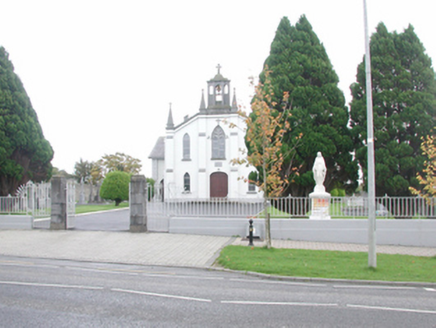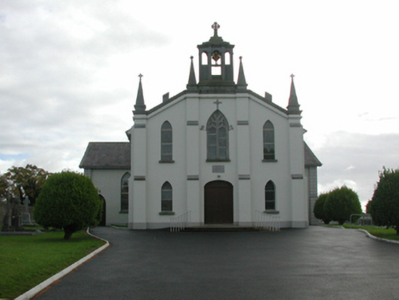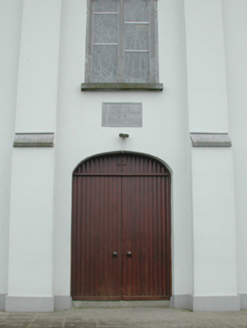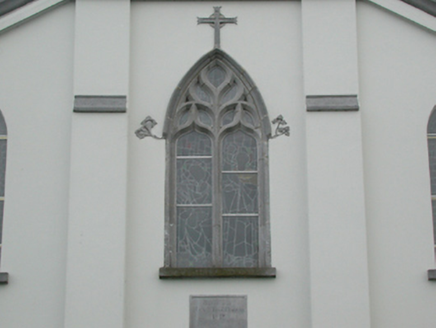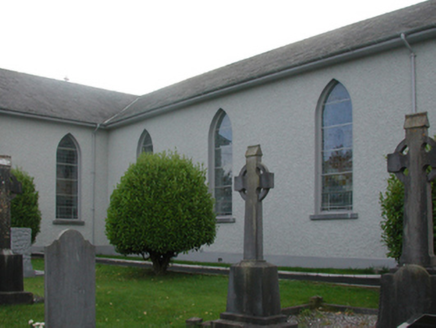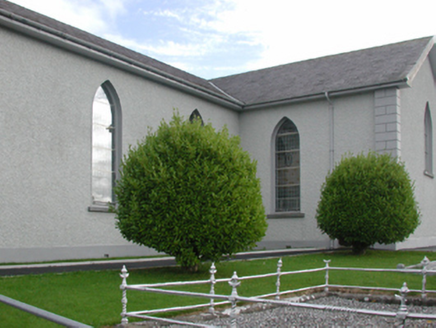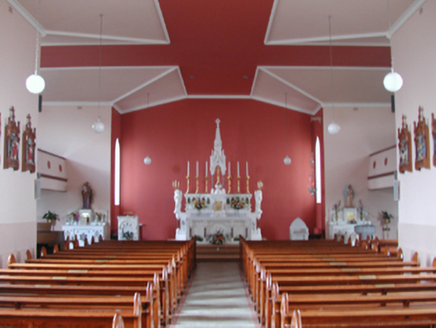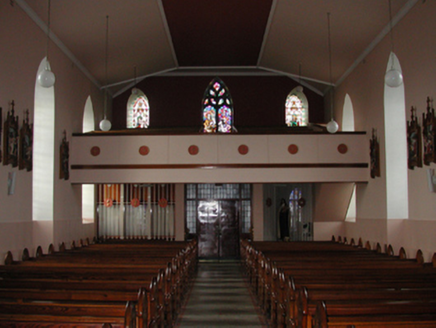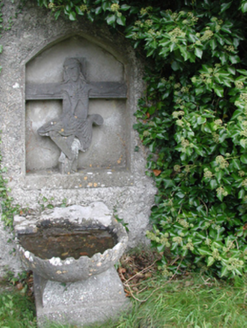Survey Data
Reg No
12302002
Rating
Regional
Categories of Special Interest
Archaeological, Architectural, Artistic, Historical, Social
Previous Name
Saint Kieran's Catholic Church
Original Use
Church/chapel
In Use As
Church/chapel
Date
1830 - 1835
Coordinates
230097, 166559
Date Recorded
19/05/2004
Date Updated
--/--/--
Description
Detached four-bay double-height Catholic church, dated 1831, on a cruciform plan comprising three-bay double-height nave opening into single-bay (single-bay deep) double-height transepts centred on single-bay double-height shallow chancel to crossing (east). Reconstructed, 1961, producing present composition. Renovated, ----, with sanctuary reordered. Pitched slate roof on a cruciform plan with ridge tiles, rusticated rendered bellcote to apex (east), and cast-iron rainwater goods on timber eaves boards on box eaves retaining cast-iron downpipes. Roughcast walls on rendered plinth with rusticated rendered piers to corners; rendered surface finish to entrance (west) front on rendered plinth with cut-limestone obelisk pinnacle-topped stepped buttresses framing Celtic Cross finial-topped cut-limestone bellcote. Lancet window openings with drag edged dragged cut-limestone sills, and concealed dressings framing storm glazing over fixed-pane fittings having stained glass margins centred on leaded stained glass lozenges. Lancet window openings (east) with drag edged dragged cut-limestone sills, and concealed dressings framing storm glazing over fixed-pane fittings having stained glass margins centred on leaded stained glass lozenges. Segmental-headed door opening to entrance (west) front with cut-limestone step threshold, and concealed dressings framing replacement timber double doors having overpanel. Pointed-arch window opening (gable) with drag edged dragged cut-limestone sill, and reclaimed cut-limestone surround with Cross finial-topped hood moulding framing storm glazing over fixed-pane fittings having leaded stained glass panels. Lancet flanking window openings with drag edged dragged cut-limestone sills, and concealed dressings framing storm glazing over fixed-pane fittings having leaded stained glass panels. Interior including vestibule (west); square-headed door opening into nave with timber double doors having sidelights on panelled risers below overlight; full-height interior with choir gallery below "West Window" (----), central aisle between timber pews, grouped Gothic-style timber stations between stained glass memorial windows (----), and carpeted stepped dais to sanctuary to crossing (east) reordered, ----, with "flèche"-topped high altar. Set in landscaped grounds.
Appraisal
A church 'Built by Revd. Thos. Brenan' representing an important component of the ecclesiastical heritage of County Kilkenny with the architectural value of the composition, one recalling the contemporary Catholic Church of the Assumption (1832) in Urlingford (see 12304011) and Catholic Church of the Immaculate Conception (1845) in Galmoy (see 12400301), confirmed by such attributes as the cruciform plan form, aligned along a liturgically-correct axis; the slender profile of the openings underpinning a "medieval" Gothic theme with the "West Window" reclaimed from the medieval Fertagh Abbey [SMR KK008-152002-]; and the arcaded bellcote embellishing the roofline as a picturesque eye-catcher in the landscape: meanwhile, aspects of the composition clearly illustrate the near-total reconstruction of the church to designs by Simon Aloysius Leonard (1903-76) of Suffolk Street, Dublin (DIA). Having been well maintained, the elementary form and massing survive intact together with substantial quantities of the original fabric, both to the exterior and to the interior reordered (----) in accordance with the liturgical reforms sanctioned by the Second Ecumenical Council of the Vatican (1962-5) where contemporary joinery; stained glass; a font reclaimed from the medieval Fertagh Abbey [SMR KK008152001-]; and a "flèche"-topped high altar, all highlight the artistic potential of a church making a pleasing visual statement in a rural village street scene. NOTE: An adjacent graveyard features a crucifixion panel reclaimed from the medieval Fertagh Abbey with 'the body represented in an unusual schematized and contorted style…the face [with] an intensely dramatic and forceful expression' [SMR KK008-150003-].
